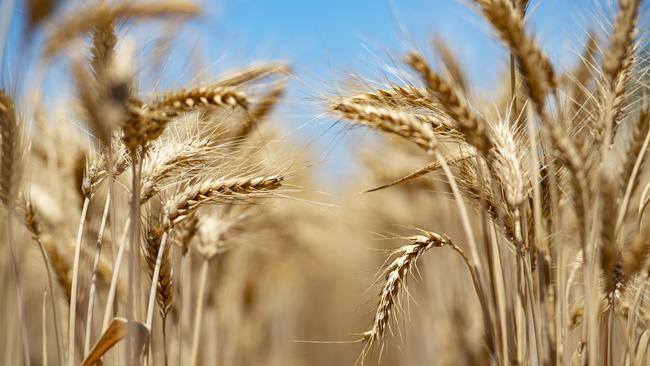The prospect of an El Nino weather pattern could prompt a shift in stock sentiment
Can your shares portfolio weather the weather? Here’s a look at some surprising impacts the dry weather pattern could have on local stocks.

Australia, the sunburnt country, looks to be on the cusp of swinging back to “droughts” from “flooding rains” as the emergence of an El Nino weather pattern appears to be increasingly likely.
While an El Nino event has not been declared locally, there is definitely an expectation of a hotter, drier phase, with some companies already flagging to shareholders that this could cause uncertainty.
For some, such as an insurers, a swing away from flood events and just rain in general can be a positive, while agricultural stocks have a less certain outlook, with international factors such as the war in Ukraine - which exports more grains than Australia, a major factor in global pricing and supply.
RaboResearch Australia and New Zealand general manager Stefan Vogel said for Australia, El Nino typically meant drier conditions in the farming areas of Queensland and New South Wales, and even down into parts of Victoria.
Australia is emerging from El Nino’s counterpart - a La Nina pattern, which has brought with it wetter conditions and “heavy farm productivity’’ he said.
Australia now looks likely to swing from a “massive” 40 million tonne grain crop last year to somewhere in the range of 26-27 million tonnes.
“If you look a few years back in drought years, we were at as low as somewhere around 15 million metric tonnes, so the swing is massive,,” Mr Vogel said.
“We are not yet looking at a drought scenario ... but the risk is clearly there.
“We would now say there’s a likelihood we’re going to go somewhere near 26-27 million tonnes, which is not a terrible wheat crop. But if we want to reach those volumes, we really need some spring rains.’’

Bell Potter, in a report on GrainCorp released earlier this month, notes the threat of El Nino, but still has a Buy on that stock.
“We review the drivers of GrainCorp, which in general, despite the threat of El Nino, continue to seem generally favourable in grain and oilseed basis,’’ Bell Potter says.
“Current futures prices imply attractive grain trading margins for Australian marketers. If this
dynamic were to hold to the 2023-24 season, then we would expect to see a stronger
outcome within grains than in FY18 on a similar crop outcome.’’
GrainCorp also trades in oilseeds, with that market potentially buoyed by the negative effective of El Nino on the palm oil plantations across Southeast Asia which are the world’s largest vegetable oil suppliers.
Bell Potter has a price target of $9.45 for GrainCorp against $7.78 on Friday.
On the insurance front, Morgan Stanley says El Nino brings with it “cyclical upside risks” as Australia swings away from wet to dry weather, reducing the impact of damaging floods and adverse storm events.
“FY24 is heading into an El Nino, which should see IAG deliver reported earnings in line with or ahead of underlying given the dry weather tailwinds,’’ the broker says.
This will also benefit Suncorp, Morgan Stanley says, with El Nino years generally leading to 40 per cent lower catastrophe costs versus La Nina.
“What’s more, dry weather should boost earnings via lower motor claims,’’ the broker says.
At the smaller end of the market, water trader Duxton Water says interest in water leases has started to pick up in part due to fears around El Nino.

“This has led many irrigators to start looking for long-term water security options ahead of anticipated drier conditions,’’ the company said in a market update in late July.
Duxton also said the challenging economic conditions including higher interest rates and input costs “has resulted in irrigators selling water entitlements ... to generate cash to prepare for the upcoming farming season’’.
In terms of on-farm inputs, fertiliser suppliers Incitec Pivot and Nufarm have both recently copped target price downgrades.
While analyst reports do not specifically mention El Nino, Macquarie does cite “destocking through the fertiliser channel” as a downside pressure on producers.
Macquarie has a Neutral outlook for Incitec with a price target of $3 against Friday’s price of $2.90, down from $3.10, while Bell Potter downgraded Nufarm from a $7.20 price target to $7, providing plenty of potential upside from Friday’s $4.92.
While Bell Potter also notes the destocking phenomenon as part of “industry-wide headwinds” it still rates Nufarm a Buy on the back of a reversal of the destocking trend and its growth plans in areas such as commercialising its omega 3 canola product.
Long-range forecasts
Mr Vogel said over the past month there were not a lot of areas which received the sort of rains they would prefer, and Elders flagged in a profit downgrade earlier this week that it “is experiencing cautious customer sentiment in light of uncertain seasonal conditions in some farming regions’’.
“This uncertainty is now supported by the Bureau of Meteorology’s long-range forecast for September to November which predicts a heightened probability of warmer and drier than average conditions in eastern and Western parts of Australia and risk of an El Nino declaration,’’ Elders told the ASX.

Mr Vogel said while El Nino could bring drier conditions to Australia, water levels for irrigation were at good levels in many parts of the country.
“But clearly not everybody has the capability of irrigating. There’s a lot of dryland farming around where they just need the rains and if they don’t come, they have a problem.’’
El Nino’s effects naturally stretch beyond our borders, often bringing wetter conditions to the massive US soybean and corn regions.
“And that is the largest crop by far in the world that anybody is producing,’’ Mr Vogel said.
“So if they get a little wetter conditions, they could actually finally get a good yield, which could really suppress the level of grain prices quite a bit and put pressure on those prices. But they are harvesting probably in a month from now. So it’s too late for this season.’’
El Nino also tends to bring better conditions for countries such as Argentina which has been very dry in recent times.
Global factors such as the war in Ukraine, and an aberration where for the first time in a decade the world failed to add the 40 million extra tonnes of grains per year needed to feed the growing population, meant that we are coming off record prices last year.
Yields globally will recover this year however, Mr Vogel said.
“For now, it looks like we’re going to produce enough so prices have come down massively from the record high prices,’’ Mr Vogel said, adding that prices had moved higher in recent weeks due to some adverse weather.
The major cause for uncertainty in the grains market remains the war in Ukraine, which is a larger exporter of grains and oil seeds than Australia.
“So even in the next 12 months, which will be probably the worst year in at least five years of export volumes in Ukraine, they will probably still export more than we did last year in our record season here in Australia,’’ Mr Vogel said.
The upshot is that Australia is likely to be exporting much less into a global market where prices are significantly lower.
On the livestock front, Mr Vogel said herds had been rebuilding since the last drought about six years ago, and warmer, drier conditions could halt or reverse this trend.
In terms of the impact on individual shares, Citi initiated coverage on Elders this month with a Sell recommendation and a target price of $6.85, which is now higher than the company’s share price of $6.44 after a recent selldown.
“We see a chain of challenges that Elders and its peers are likely to face in the near term,’’ Citi says.
“Deteriorating crop production and yield should see less demand for crop protection and fertiliser products, less feed availabilities for livestock and increased urgency from Elders’ end-customers to offload livestock at lower weights in an environment where livestock prices have fallen.
“While we acknowledge that prices reaching their troughs could translate to higher transaction volumes both domestically and abroad, our correlation and regression analysis suggest potential setback in overall agricultural product sale value in Australia.’’







To join the conversation, please log in. Don't have an account? Register
Join the conversation, you are commenting as Logout